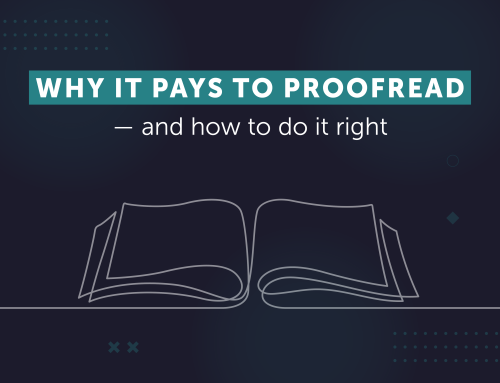Whether you’re a small business retailer or planning your first pop-up store, your window display is one of the most powerful weapons in your arsenal of tools to stand out from the competition and draw in foot traffic. Not only are you going head to head with other small businesses, but those pesky big box retailers and chain stores as well. Luckily for you, most small businesses pay little to no attention to creating effective window displays due to limited resources, while all the big guys are too busy being too uniform and boring for anyone to really look twice.
That means this is your chance to use window displays as a way to not only highlight your unique personality, but turn the heads of those passing by and engage them enough to stop, look back, and walk-in to your store where your floor staff or products can sweep them off their feet and get them to make a purchase.
Sounds pretty enticing right?
Start with a story based on a theme
When it comes to conceptualising a window display, it’s always handy to start with a pen and paper. The reason I say it’s important to start with a story based on a theme, versus a theme alone is that you could go crazy wanting to assemble all your orange and black products when it’s halloween, all your red and blue products when it’s the holidays, or all your red and pink products when it’s valentines and so on. What you want to do is to start with a theme, but use your storytelling prowess to turn it into something more sophisticated.
For example:
- Instead of “Christmas”, think “Nut Cracker”
- Instead of “Halloween”, think “Sleepy Hallow”
- Instead of “Valentine”, think “Cupid’s Mischievousness”
- Instead of “Thanksgiving,” think “Dressing Up a Turkey”
Create a focal point
Once you’ve got a rough sketch, a story based on a theme, you’ll want to take a moment to step out onto the street and really give your window a good look. By doing so, you’ll be able to determine where your customer’s eye-level is going to be, where the center line is, and whether you can incorporate elements like items suspended from the ceiling and so on. Feel free to take some tape and mark some of those areas mentioned above off.
From there you have a good idea of what that central or focal point should be, as in where do you want your prospective customers to look and how big should it be so that even if their on the other side of the street, you still have a chance to catch their attention. Also start thinking about the arrangement of products given your focal point, will they consist of straight or curved lines, will they be a pyramid or circular shape, and so on.
Be bold in every way
Let’s be honest, society’s attention span is shrinking to about less than a millisecond with all the multi-tasking people do these days. You can bet that most people walking by your store will either be juggling a conversation with a friend, texting, or walking their dog. That means that you’ve got to pull all the stops to make sure they stop and if you’re lucky be so surprised and taken away by your display that they’ll not only look, they’ll want to take photos with their smartphone and share them with the world.
So, what should you be bold with? Be bold with colors, shapes, and props. Meaning you should consider thinking outside cookie cutter colors like red and thinking more along the lines of in eye-catching fushsia – but exercise your best judgement and keep everything consistent with your brand and products of course.
Keep it simple
It’s also pretty easy to get carried away and try to stuff every one of your product lines into the display, thinking it somehow all comes together. However, instead of drawing attention to your window, you’re more likely to repel and overwhelm potential foot traffic from coming in. Don’t try to do too much or you just end up with a busy, unfocused display.
Always, keep in mind your goal, which is ultimately to draw attention to your products and help customers quickly recognise the sense in your product arrangement and why certain products are grouped with others. That also means keeping your display clutter-free and being able to justify why each component of your display is included.
Balance is key
When you’re creating a display, you’re going to have large objects and small objects, dark colors and light colors, lights and shadows, and so on. It’s important to balance the different elements you’ll be deploying in order to create a pleasing aesthetic to the eye.
For example, typically you’ll want to place larger, darker items near the bottom, with items that are lighter and more colorful at the top. This will help you avoid having your display look top heavy. Similarly, if you place all the large items to one side and all the small ones on the side, you’ve got an unbalanced window display. Imagine you’re balancing items on those vintage weight machines, which means doing things like balancing a large item one side with lots of smaller items on the other.
Trust your judgement and get a sense of what emotion your display is evoking. With a balanced display, you’re more likely to create feelings of happiness, excitement, and enjoyment, whereas an unbalanced display may signal anxiety or instability, even if on a subconscious level, it really does matter.
Pay attention to lighting
When it comes to smaller retailers wanting to create effective window displays, lighting can sometimes be an after-thought or something to think about if you’ve got the budget for “extra-costs,” however, lighting can be a crucial component in getting people to stop.
Not only can you do some pretty neat things in the way you light something and cast the surroundings in shadows to force people to pay attention to the lit item in a more dramatic way, but it pays dividends in helping you get your focal point right on and directing onlookers eyes to where you want them.
It’s recommended to not light displays directly from the top which leads to unattractive shadows, instead consider having the lights be lightly to the sides and to the front of the display. This will bring out the 3D quality of the display and you can really have some fun when you have light coming at it from different angles.
Taking a final look
Once you’ve got all the pieces where you want them, make sure to take a look at your window display from every possible angle. Very rarely is a person going to only notice a display when they’re standing right in front of it. Walk up to it from different directions and check things like your focal point, how visible your signage or call to actions are, and if it all appears balanced.
If you’re satisfied and happy with the results, congratulations, you’ve got one heck of a window display. If not, don’t be too hard on yourself and figure out what feels off and how you can improve the next time around. That’s because even if you’ve got the most spectacular display in the world, eventually, people will get bored of walking past it. Which means you’ve got to switch it up every so often and keep things fresh, which is perfect for getting that necessary practice to create those ever important window displays that will get people in the door, increase sales and make people fall in love with your brand.
















